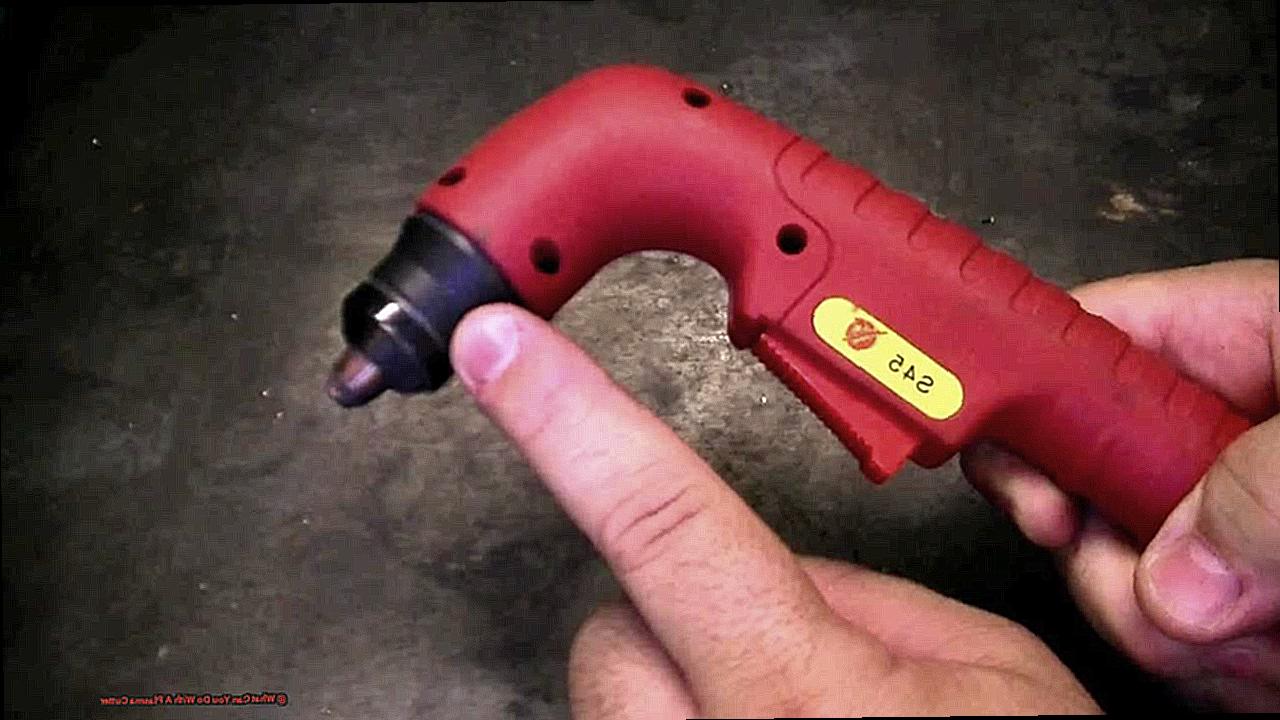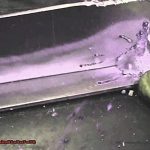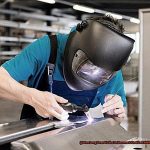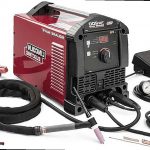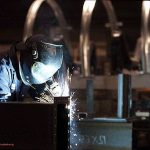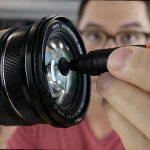If you’re a welder, you’ve probably encountered this versatile tool at some point in your career. But do you truly understand the wide range of uses and advantages that come with using 8011?
Well, get ready to expand your knowledge because we’re about to delve into the world of this essential welding rod. From its exceptional strength and durability to its compatibility with various materials, there’s so much to uncover about the 8011.
So put on your welding mask and let’s begin our journey.
8018 welding rod
Contents
Your quest ends here with the 8018 welding rod. This low-hydrogen electrode is highly favored by welders for its unparalleled capabilities in welding high-strength, low-alloy steel in structural applications. Its unique composition and properties have made it a go-to choice for heavy equipment repair and large-scale construction projects. In this blog post, we will delve deeper into the intricacies of the 8018 welding rod and why it should be an essential tool in your welding arsenal.
Low Hydrogen Concentration for Enhanced Weld Strength
While hydrogen may be essential for sustaining life, it can cause detrimental effects in the welding process. Excessive levels of hydrogen during welding can result in cracks and defects in welded joints, leading to weak and unreliable welds. This is where the 8018 welding rod comes into play. With its minimal hydrogen content, this electrode ensures that your welds will be robust and free from any flaws.
Impressive Tensile Strength for Heavy-Duty Applications
One of the most remarkable properties of the 8018 welding rod is its high tensile strength. This means that the welded joint can withstand a considerable amount of force without succumbing to breakage or deformation. As such, it is the ideal choice for structural welds in buildings, bridges, and other large-scale construction projects. So if you require a welding rod that can handle heavy loads and pressure with ease, look no further than the 8018.
Excellent Ductility and Impact Resistance for Seamless Welding
Apart from its strength, the 8018 welding rod also boasts good ductility and impact resistance. Ductility refers to a metal’s ability to deform under stress without breaking, making it easier to manipulate during the welding process and allowing for more flexibility. On the other hand, impact resistance implies that the welded joint can endure sudden impacts without cracking or breaking.
E8018 electrode specification
Unleash the full potential of your welding projects with the E8018 electrode specification. This low-hydrogen rod is a game-changer in the welding industry, renowned for its impeccable welds and unparalleled strength in heavy-duty applications. In this section, we will delve deeper into the composition and properties of this electrode, granting you a profound understanding of its capabilities.
The E8018 electrode belongs to the AWS A5.1 class and falls under the E8018-B2 category. It is comprised of low carbon, low alloy steel with the addition of iron powder for enhanced fortitude. This distinct composition makes it ideal for welding low-carbon steels, producing top-notch and radiographic welds.
But what distinguishes the E8018 electrode from other welding rods? The answer lies in its specialized variant – Pinnacle Alloys E808-BL. This version is tailor-made for high-temperature service and compatible with certain chromium-molybdenum materials like ASTM A387 Grade 9 or 9So if you’re dealing with these materials, the E8018 electrode is your ultimate solution.
One of the major advantages of using the E8018 electrode is its low-hydrogen content. This ensures minimal cracking and porosity in the welds, making it a dependable choice for critical applications. Furthermore, it exhibits excellent crack resistance and high tensile strength, providing durability and long-lasting performance.
In terms of usability, the E8018 electrode is versatile and can be employed in various positions – flat, horizontal, vertical, and overhead. Its steady arc and effortless slag removal make it suitable for both novice and experienced welders.
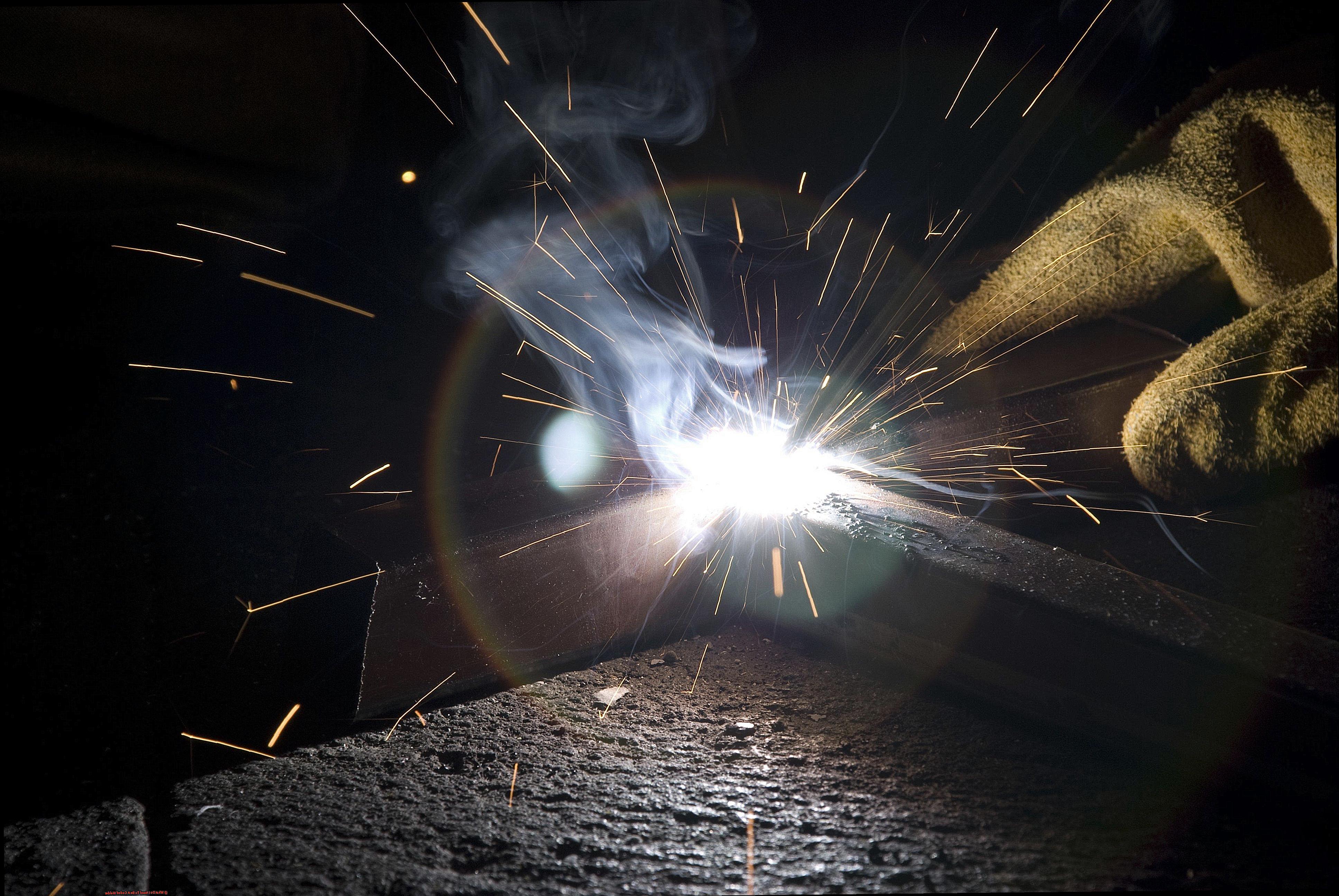
To sum it up, the E8018 electrode specification is indispensable for any welding project that demands robust and pliable welds. With its specialized version for high-temperature service and compatibility with certain materials, its reliability and quality are unquestionable.
8018 welding rod Types
These top-notch electrodes are renowned for their durability and sturdiness, making them a go-to option for various welding tasks. However, what many may not know is that there are multiple types of 8018 welding rods in the market, each with its own distinctive features and applications. In this blog post, we will delve into the five main varieties of 8018 welding rods.
First on our list is E8018-CThis particular type of welding rod is specifically designed for welding low alloy steels with a minimum tensile strength of 80,000 psi. It contains a notable 1% molybdenum, which significantly boosts its strength and toughness. As a result, it is particularly suitable for welding structures, pressure vessels, and pipes that require exceptional strength and impact resistance.
Next up is E8018-C3, which has a 3% nickel content. This feature makes it an excellent choice for welding low alloy steels with high nickel levels, such as ASTM A333 Gr. 6 pipes. Furthermore, it also performs well when used to weld steels that require both high tensile strength and ductility.
Moving on to E8018-B2, this type of welding rod is tailor-made for high-strength low-alloy (HSLA) steels with a minimum tensile strength of 70,000 psi. It contains 2% chromium and 0.5% molybdenum, which greatly enhances its strength and corrosion resistance. As a result, it is commonly used in the fabrication of pressure vessels, boilers, and piping systems.
E8018-B6 is another variation of the reliable 8018 welding rod that is primarily used for welding HSLA steels with a minimum tensile strength of 80,000 psi.
8018 welding rod chemical composition
When it comes to welding, the proper electrode can make all the difference. And in terms of strength and adaptability, the 8018 welding rod reigns supreme. But what sets this electrode apart? The answer lies within its chemical composition.
The 8018 welding rod is categorized as a low-hydrogen, all-position electrode primarily utilized for welding carbon steels. But what does this mean in regards to its chemical makeup?
Let’s begin with the most significant component – manganese. This element serves as a deoxidizer, aiding in the elimination of impurities from the weld. It also plays a vital role in providing exceptional penetration and a robust bond between the base metal and filler material.
But that’s not all. The 8018 welding rod also encompasses trace amounts of silicon, sulfur, and phosphorus. These elements serve as fluxing agents, enhancing the quality of the weld and preventing porosity.
However, the true game-changer for 8018 welding rods is their low-hydrogen content. Hydrogen can cause cracks in welds, resulting in potential failures and structural complications. But with its low-hydrogen characteristic, 8018 rods are ideal for high-strength applications and critical structures.
This low-hydrogen feature is achieved through a specialized manufacturing process that involves baking the electrodes at high temperatures to eliminate any moisture or hydrogen present. This process guarantees that the welding rod is free from contaminants that could impact the weld’s quality.
Moreover, the chemical composition of 8018 welding rods allows for versatility in various welding positions. As an all-position electrode, it can be utilized in vertical, horizontal, and overhead welding positions. The abundance of manganese in its composition allows for exceptional penetration and ensures a steadfast bond between the base metal and filler material.
8018 welding rod meaning
This versatile electrode is a go-to option for welding structural steel, high-strength steel, and even critical components like pressure vessels and heavy equipment.
But what does the term “8018 welding rod” really mean? Let’s delve into the world of welding to uncover its significance.
First and foremost, the numbers in a welding rod’s name are classified according to the American Welding Society (AWS) standards. In the case of 8018, the first two digits indicate its minimum tensile strength in thousands of pounds per square inch (Ksi). This means that an 8018 rod has a remarkable minimum tensile strength of 80 Ksi.
But that’s not all – the number “18” at the end signifies the preferred welding position for this rod, which is flat or horizontal. This indicates that the 8018 rod is most effective when used in these positions, making it an ideal choice for structural and high-strength applications.
So, what sets this rod apart from others? Well, its chemical composition plays a crucial role. The high manganese content serves as a deoxidizer, eliminating impurities from the weld pool and ensuring a clean and sturdy bond. Additionally, its low-hydrogen content makes it perfect for critical components that require toughness at low temperatures.
Whether you’re working on a construction site or manufacturing heavy equipment, the 8018 welding rod is your ultimate companion. Its versatility and strength make it a top pick for welders seeking to achieve high-quality and dependable welds.
Next time you need a welding rod that can handle any task with ease, keep “8018” in mind – it’s not just a mere number, but a representation of strength, flexibility, and excellence in one electrode.
8018 welding rod uses
From towering skyscrapers to offshore oil rigs, the mighty 8018 welding rod plays a crucial role in constructing some of the world’s most impressive structures. But its uses extend far beyond just structural steel. This versatile electrode is a must-have for welders of all levels, offering endless possibilities for tackling a variety of projects.
One of the main advantages of the 8018 welding rod is its remarkable tensile strength. This makes it the perfect choice for welding high-strength steel, including A and A7 grades. Its ability to withstand intense pressure and stress makes it a go-to for welding pressure vessels, pipelines, and other heavy-duty equipment.
But that’s not all – the 8018 welding rod also takes the lead when it comes to preferred welding position. Unlike some other electrodes that are limited to specific positions, this one can be used in all positions – flat, horizontal, vertical, and even overhead. So whether you’re working on a level surface or hanging from a height, this versatile electrode has got you covered.
However, what truly sets the 8018 welding rod apart is its exceptional chemical composition. This electrode contains elements like molybdenum, nickel, and chromium, which enhance its strength and ductility. It also has low levels of hydrogen, reducing the risk of cracking and ensuring a strong, top-quality weld.
With its adaptability and reliability, it’s no surprise that the 8018 welding rod is widely used in various industries. From constructing bridges to fabricating mobile equipment, this electrode is a go-to for tackling even the toughest jobs.
8018 welding rod amperage
As a master of all things related to 8018 welding rods, you understand the critical role that amperage plays in achieving top-notch welds. But do you know the crucial factors that come into play when determining the ideal amperage for your welding needs?
Before diving into the nitty-gritty details, let’s start with the basics. The 8018 welding rod is renowned for its ability to produce strong and crack-resistant welds, thanks to its low-hydrogen and high-strength composition. It’s a go-to choice for structural welding in industries such as construction, shipbuilding, and bridge construction.
But here’s where things get interesting – the recommended amperage for 8018 welding rod is not a one-size-fits-all solution. In fact, it varies depending on the diameter of the electrode. For instance, a 3/32 inch (2.4 mm) electrode requires 70-100 amps, while a 1/8 inch (3.2 mm) electrode needs 100-140 amps.
But why does amperage matter so much? Well, it directly impacts the heat input and penetration of the welding arc, which ultimately determines the quality and strength of the weld. Using too low of an amperage can result in a weak and subpar weld, while using too high of an amperage can lead to excessive heat input and burn through the base metal.
But wait, there’s more – incorrect amperage settings can also cause issues such as excessive spatter and difficulty controlling the arc. This can result in a messy weld that requires more clean-up work and increases the risk of defects like porosity and inclusions.
E8018 Rod Welding Positions
Welding is an intricate craft requiring precision, technique, and knowledge beyond the mere melting of metal. As a welding expert, you understand the importance of selecting the right welding rod for strong and durable welds. The E8018 welding rod has risen in popularity due to its adaptability and robustness. However, it’s essential to note that the welding position also plays a crucial role in producing top-quality welds. Let’s delve into the realm of welding positions and uncover the effective utilization of E8018 rods in each one.
The Four Unique Welding Positions
Before we delve into the intricacies of using E8018 rods, let’s first grasp the four primary welding positions: flat, horizontal, vertical, and overhead. Each position presents its challenges and requires specific techniques to achieve solid and lasting welds.
- Flat Position: Also known as the downhand position, this is when the welder operates on a horizontal surface with the joint facing upwards. This position typically applies to extensive structures like bridges or ships.
- Horizontal Position: In this position, the welder works on a vertical surface with the joint facing horizontally. It demands precision and control to ensure uniform penetration throughout the joint.
- Vertical Position: This refers to welding on an upward-facing surface with the joint facing downwards. It’s often employed for joints in corners or on the sides of structures.
- Overhead Position: Regarded as the most demanding position, the welder operates on an overhead surface with the joint facing upwards. It mandates meticulous control and technique to avoid gaps or uneven penetration.
The Versatility of E8018 Rods in Welding Positions
Now that we have a comprehensive understanding of welding positions, let’s explore how E8018 rods can be efficiently utilized in each one.
7018 vs 8018 Welding Rod
The realm of welding is brimming with an array of rods, each possessing its own distinct capabilities and purposes. Among the most frequently compared rods are the 7018 and 8018 welding rods. Despite their similar names, these low hydrogen electrodes differ greatly in their strengths and applications. As a seasoned welder, I have gained extensive experience with both of these rods and am thrilled to divulge the key contrasts between them.
Strength Capabilities
When it comes to strength, the 7018 welding rod emerges as the clear victor. Its tensile strength can reach up to a whopping 70,000 PSI, making it the top choice for welding carbon steel. On the contrary, the 8018 welding rod has a tensile strength that is comparable to that of cast materials, making it better suited for low alloy steel to carbon steel applications. Hence, if you are working on a project that entails welding carbon steel, the 7018 rod is unquestionably your best bet.
Preferred Uses
As mentioned earlier, the preferred uses for these two rods vary depending on their strength capabilities. The 7018 welding rod is commonly utilized for welding carbon steel structures such as bridges, buildings, and pipelines. Its remarkable strength renders it ideal for heavy-duty projects where structural integrity is paramount. On the other hand, the 8018 welding rod is best suited for low alloy steel to carbon steel welding applications. This makes it a popular choice for welding housings, machinery parts, and other similar components.
Ductility
Another crucial factor to consider when selecting a welding rod is its ductility. Ductility refers to a material’s ability to deform without breaking under tensile stress. In simpler terms, it measures how much a material can stretch before reaching its breaking point. In this aspect, once again, the 7018 welding rod surpasses its counterpart.
Conclusion
In conclusion, the 8011 welding rod is a must-have tool for welders of all levels. Its exceptional strength and compatibility with various materials make it an essential choice for a wide range of applications. With its low-hydrogen content, this versatile rod delivers top-quality and durable welds that can withstand even the toughest conditions.
Whether you’re working on structural projects or repairing heavy equipment, the 8011 welding rod is your reliable companion. Its specialized variant for high-temperature service and compatibility with materials like chromium-molybdenum make it a go-to option for welding high-strength, low-alloy steel. Its impressive tensile strength, ductility, and impact resistance ensure reliable welds that meet critical requirements.
But the benefits of the 8011 welding rod don’t stop there. It can be used in all positions – flat, horizontal, vertical, and overhead – making it a versatile tool for any project. And thanks to its specialized manufacturing process that eliminates any moisture or hydrogen present in the electrode, you can trust that your welds will be free from defects like cracks and porosity.
So next time you gear up for a welding project, remember the incredible capabilities of the 8011 welding rod. It’s not just a tool but an essential component in achieving strong and dependable welds that stand the test of time.
